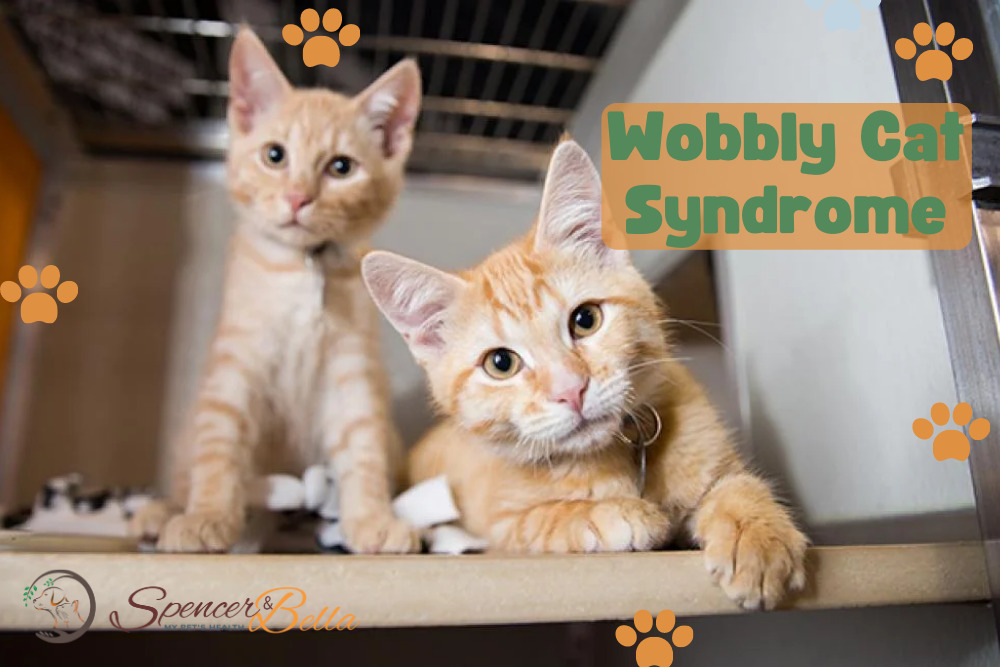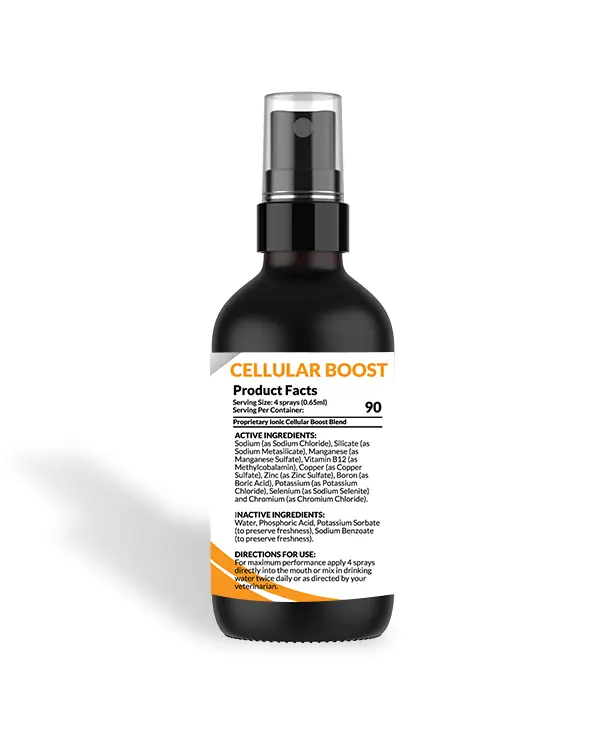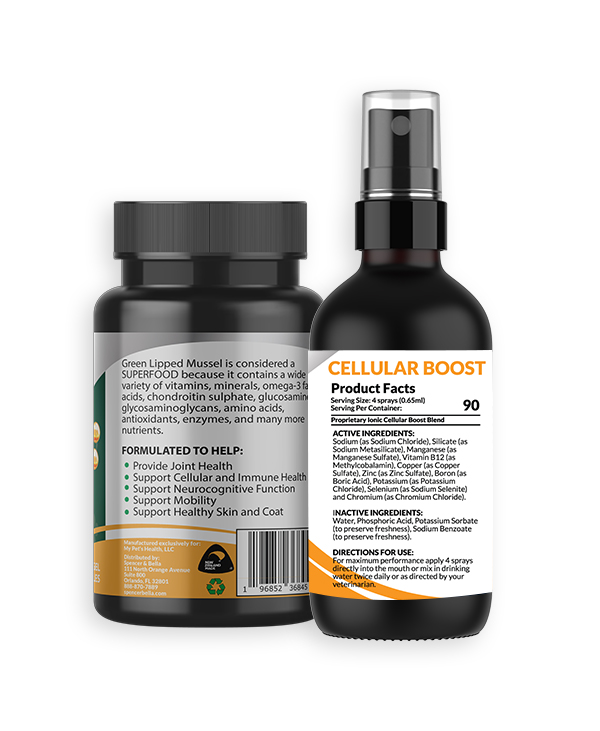What is Wobbly Cat Syndrome?
Wobbly Cat Syndrome, also known as feline cerebellar hypoplasia or simply “wobbliness,” is a neurological condition that affects cats. It is characterized by unsteady movements, lack of coordination, and an unsteady gait. This condition occurs when the cerebellum, the part of the brain responsible for controlling balance and coordination, does not develop properly. While it may sound alarming, it is important to understand that Wobbly Cat Syndrome is not a painful or degenerative condition, and affected cats can live happy lives with the right care and support.
Definition and Overview
Wobbly Cat Syndrome is the underdevelopment or malformation of the cerebellum, which leads to coordination and balance issues in cats. It can manifest as mild wobbliness or more severe symptoms that significantly impact the cat’s mobility. The condition is typically present from birth or develops during the early stages of a cat’s life.
Causes and Risk Factors
Wobbly Cat Syndrome can have various causes. The most common cause is an infection with feline panleukopenia virus during pregnancy. Other factors that can contribute to the development of Wobbly Cat Syndrome include exposure to certain toxins, malnutrition during the mother cat’s pregnancy, or genetic abnormalities. Kittens born to feral or unvaccinated mother cats are at a higher risk of contracting the virus that can lead to the syndrome.
Development and Onset of the Syndrome
The cerebellum undergoes crucial development during a cat’s gestation period. If the cerebellum is damaged or affected during this time, it can result in the development of Wobbly Cat Syndrome. The severity of the condition can vary, ranging from mild wobbliness to more pronounced mobility issues. The onset of symptoms is typically observed soon after birth or within a few weeks. However, in some cases, symptoms may not become apparent until the affected cat starts to explore and engage in physical activities.
Recognizing the Symptoms of Wobbly Cat Syndrome
Wobbly Cat Syndrome, or feline cerebellar hypoplasia, manifests through various symptoms that can help identify the condition in affected cats. While the severity of the symptoms may vary, they revolve around difficulties with coordination, balance, and motor skills. Understanding these symptoms can aid in early recognition and prompt intervention for affected cats.
A. Unsteady Gait and Lack of Coordination:
One of the hallmark signs of Wobbly Cat Syndrome is an unsteady gait. Affected cats may exhibit a wobbly or “drunken” walk, often swaying from side to side. They may struggle to maintain their balance, leading to frequent stumbling, falling, or even difficulty in standing up. Their movements may appear clumsy, and they may struggle with tasks that require precise coordination, such as jumping or navigating obstacles.
B. Tremors and Shaking Movements:
Cats with Wobbly Cat Syndrome may experience tremors and shaking movements, particularly when they are attempting to perform certain actions or are under stress. These tremors are involuntary and can affect various parts of the body, such as the head, limbs, or the entire body. The severity of the tremors can range from mild to more pronounced, depending on the individual cat.
C. Balance and Proprioception Issues:
Balance and proprioception, the ability to sense the body’s position in space, are commonly affected in cats with Wobbly Cat Syndrome. They may struggle with tasks that require balance, such as walking along narrow surfaces or climbing heights. These cats may find it challenging to judge distances accurately and may misjudge jumps or landings, leading to falls or accidents.
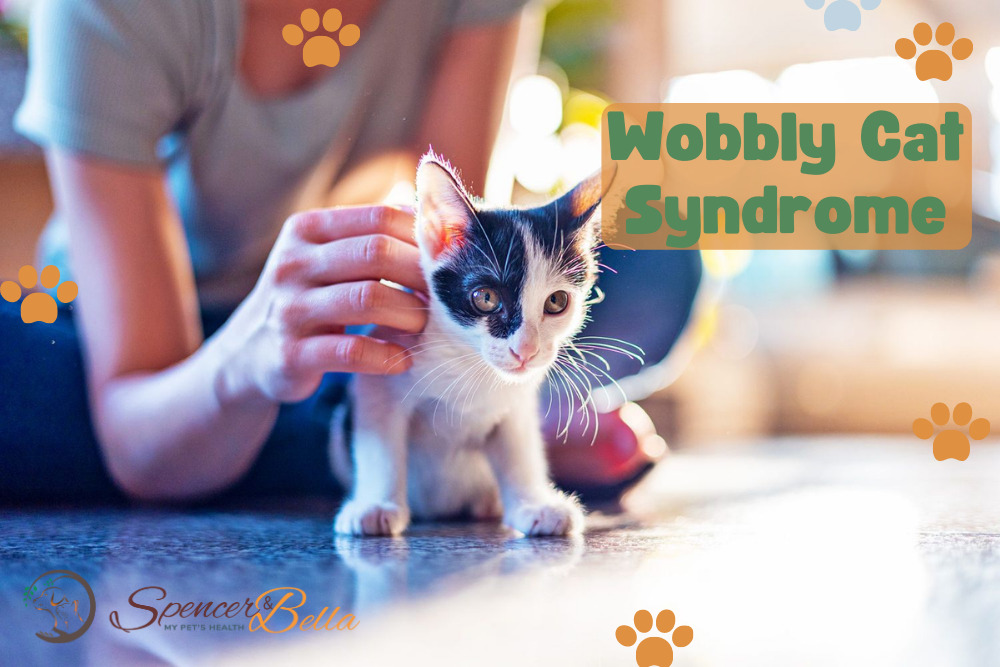
D. Other Associated Symptoms:
In addition to the primary symptoms related to coordination and balance, there may be other associated signs that can be observed in cats with Wobbly Cat Syndrome. These can include a wide-based stance, where the cat spreads its legs apart to maintain stability, exaggerated or jerky movements, difficulties in grooming themselves, and challenges in using the litter box properly.
Early recognition and diagnosis of Wobbly Cat Syndrome are crucial for providing appropriate care and support to affected cats. If you notice any of these symptoms in your cat, it is important to consult with a veterinarian who can evaluate your cat’s condition and provide guidance on managing the syndrome. In the following sections, we will explore the diagnosis, treatment options, and strategies for enhancing the quality of life for cats with Wobbly Cat Syndrome.
You might also be interested in: A Comprehensive Guide to Cat Care.
Diagnosing Wobbly Cat Syndrome
Accurate diagnosis of Wobbly Cat Syndrome, or feline cerebellar hypoplasia, is crucial for understanding the underlying cause of a cat’s symptoms and determining appropriate treatment strategies. Diagnosing this condition involves a thorough veterinary examination, consideration of the cat’s medical history, and the use of diagnostic tests and imaging techniques to rule out other potential causes.
A. Veterinary Examination and Medical History:
The diagnostic process begins with a comprehensive veterinary examination. The veterinarian will observe the cat’s gait, coordination, and overall physical condition. They will also inquire about the cat’s medical history, including any known or suspected exposure to infectious diseases, toxins, or traumatic events during the early stages of development.
B. Differential Diagnosis:
Distinguishing Wobbly Cat Syndrome from other conditions that may cause similar symptoms is a crucial step in the diagnostic process. The veterinarian will consider a range of potential differential diagnoses, such as vestibular disorders, spinal cord injuries, or certain viral infections. Through a systematic evaluation and elimination of other possibilities, furthermore, a more accurate diagnosis can be reached.
C. Diagnostic Tests and Imaging:
To support the diagnosis of Wobbly Cat Syndrome, additional diagnostic tests and imaging techniques may be employed. These can include blood tests to assess organ function and rule out infectious diseases, as well as cerebrospinal fluid analysis to evaluate for potential central nervous system abnormalities. In some cases, advanced imaging methods like magnetic resonance imaging (MRI) or computed tomography (CT) scans may be recommended to visualize the structure and development of the cerebellum.
It is important to note that a definitive diagnosis of Wobbly Cat Syndrome is typically based on clinical signs and exclusion of other potential causes rather than specific laboratory tests. The characteristic symptoms, combined with the absence of other significant abnormalities, can strongly indicate the presence of Wobbly Cat Syndrome.
By conducting a thorough veterinary examination, considering the medical history, and utilizing appropriate diagnostic tests, veterinarians can arrive at a diagnosis of Wobbly Cat Syndrome. This diagnostic process is essential for ensuring proper management and care tailored to the specific needs of affected cats. In the next section, we will delve into various treatment options and strategies to enhance the quality of life for cats living with Wobbly Cat Syndrome.
Life Expectancy and Quality of Life
Understanding the prognosis and factors affecting the life expectancy of cats with Wobbly Cat Syndrome is essential for pet owners so they can provide appropriate care and ensure a fulfilling and enriched life for their feline companions.
A. Understanding the Prognosis:
Wobbly Cat Syndrome is a non-progressive condition, meaning that it does not worsen over time. In most cases, the symptoms remain stable throughout the cat’s life. The prognosis for cats with Wobbly Cat Syndrome is positive, as they can lead happy and fulfilling lives with proper care and support. In the meantime, the condition may present challenges, it is important to remember that affected cats can still experience a good quality of life.
B. Factors Affecting Life Expectancy:
The life expectancy of cats with Wobbly Cat Syndrome can vary depending on several factors. In general, affected cats can live a normal lifespan, similar to cats without the condition. However, certain factors can influence their overall health and longevity. These factors include the severity of the symptoms, the presence of any co-existing health conditions, and the environment in which the cat lives. It is crucial to provide a safe and supportive environment that minimizes potential hazards and promotes the well-being of the cat.
C. Promoting a Fulfilling and Enriched Life for Cats with Wobbly Cat Syndrome:
To enhance the quality of life for cats with Wobbly Cat Syndrome, there are several strategies that pet owners can implement. Providing a safe and accessible living environment is crucial, as cats with coordination and balance issues may require modifications such as ramps or low-sided litter boxes. Regular veterinary check-ups and preventive care, including vaccinations and parasite control, are essential to maintain overall health.
Additionally, enriching the cat’s environment through interactive toys, scratching posts, and vertical spaces can help stimulate their physical and mental well-being. Engaging in gentle play and exercise tailored to the cat’s abilities can also be beneficial. A balanced and nutritious diet, tailored to the cat’s specific needs, is important for overall health and weight management.
Regular social interaction and bonding with the cat are vital for their emotional well-being. Patience, understanding, and moreover, a supportive attitude towards their unique needs can create a strong and loving bond between the cat and their caregiver.
Treatment and Management Approaches
Effectively managing Wobbly Cat Syndrome involves a comprehensive approach that addresses the unique needs of affected cats. Treatment focuses on providing supportive care, making environmental modifications, ensuring proper nutrition, utilizing medications and therapies when necessary, implementing physical rehabilitation and exercise, and offering emotional support and bonding.
-
Cellular BOOST
$35.00 - or Subscribe and Save 10% -
Cellular BOOST & Essential OMEGAS Bundle
$84.00 - or Subscribe and Save 10% -
Essential OMEGAS
$49.00 - or Subscribe and Save 10%
A. Supportive Care and Environmental Modifications:
Supportive care plays a crucial role in helping cats with Wobbly Cat Syndrome thrive. Creating a safe and accessible environment is essential to accommodate their unique mobility challenges.
B. Nutritional Considerations:
Proper nutrition is important for cats with Wobbly Cat Syndrome to support their overall health and well-being. Consultation with a veterinarian to determine the appropriate diet and feeding regimen is recommended. High-quality cat food that meets their specific nutritional requirements can help maintain a healthy weight and support their immune system.
C. Medications and Therapies:
For some, medications may be prescribed to manage specific symptoms associated with Wobbly. These may include anti-seizure medications to control tremors or muscle relaxants to alleviate stiffness. Additionally, therapies such as acupuncture or chiropractic care may be considered to support their physical well-being. It is essential to consult with a veterinarian to determine the most suitable treatment options for each individual cat.
D. Physical Rehabilitation and Exercise:
Physical rehabilitation and exercise can play a significant role in improving muscle strength, coordination, and balance in cats with Wobbly Cat Syndrome. Simple exercises and activities, tailored to their abilities, can help maintain muscle tone and flexibility. This may include gentle stretching exercises, controlled movements, or utilizing specialized equipment such as balance boards or therapy balls.
E. Emotional Support and Bonding:
Cats with Wobbly Cat Syndrome may benefit from emotional support and bonding with their caregivers. Spending quality time with them, engaging in gentle play, and providing reassurance and comfort can contribute to their overall well-being. Building a strong bond and trust can help reduce stress and anxiety, promoting a sense of security and contentment.
By implementing a comprehensive treatment and management approach that encompasses supportive care, environmental modifications, proper nutrition, medications and therapies, physical rehabilitation and exercise, and emotional support, pet owners can help cats with Syndrome lead fulfilling lives. Moreover, regular communication with a veterinarian is crucial to ensure that the treatment plan is tailored to the specific needs of the individual cat and to address any changes or challenges that may arise. Additionally, with proper care and attention, cats with Wobbly Cat Syndrome can enjoy a good quality of life and experience the love and joy of a nurturing home environment.
Living with a Cat Affected by Wobbly Cat Syndrome
Living with a cat affected by Syndrome requires special attention and care to ensure their well-being and quality of life. By creating a safe and accessible environment, ensuring proper nutrition and hydration, promoting mental stimulation and enrichment, and prioritizing regular veterinary care, cat owners can provide the best possible support for their furry companions.
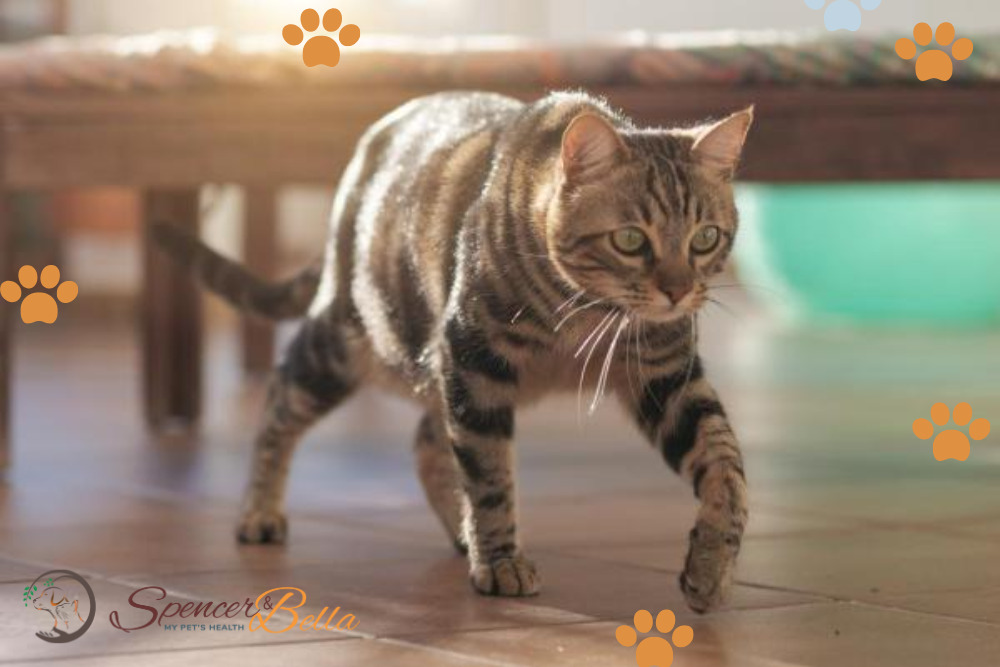
A. Creating a Safe and Accessible Environment:
Adapting the home environment to accommodate the unique needs of a cat with Wobbly Cat Syndrome is essential. This includes removing potential hazards such as sharp objects or toxic plants and providing secure and stable surfaces for them to walk on. Consider placing litter boxes, food, and water bowls in easily accessible locations, and provide comfortable bedding that offers support and stability.
B. Ensuring Proper Nutrition and Hydration:
Proper nutrition and hydration are vital for cats with Wobbly Cat Syndrome. Consult with a veterinarian to determine the appropriate diet and feeding routine that meets their specific nutritional needs. always Providing fresh water and monitoring their food intake can help maintain a healthy weight and prevent dehydration.
C. Promoting Mental Stimulation and Enrichment:
Engaging a cat with Wobbly Cat Syndrome in mental stimulation and enrichment activities can enhance their overall well-being. Interactive toys, puzzle feeders, and gentle play sessions can keep them mentally engaged and provide opportunities for light exercise. Additionally, providing scratching posts, climbing structures, and hiding spots can offer physical and mental stimulation while promoting their natural instincts.
D. Veterinary Care and Regular Check-ups:
Consistent veterinary care is essential for cats affected by Wobbly Cat Syndrome to closely monitor their condition and address any potential health issues. It is recommended to schedule regular check-ups with a veterinarian who has experience with the syndrome and can offer appropriate guidance and treatment options. Open communication is key, so make sure to discuss any observed changes in symptoms or behaviors to enable timely intervention, if necessary. By staying proactive and maintaining a collaborative relationship with your veterinarian, you can ensure the well-being and quality of life for your cat with Wobbly Cat Syndrome.
Living with a cat affected by Wobbly Cat Syndrome requires patience, understanding, and a commitment to their well-being. By creating a safe environment, ensuring proper nutrition and hydration, promoting mental stimulation and enrichment. And prioritizing regular veterinary care, cat owners can provide their beloved companions with the best possible quality of life. Remember to offer love, support, and plenty of affection, as these cats often have unique personalities and can bring joy and happiness despite their mobility challenges.
Final Thoughts
In conclusion, while Wobbly Cat Syndrome may present challenges, cats with this condition can lead fulfilling lives with proper care and support. Understanding the prognosis, addressing factors that affect life expectancy. And implementing strategies to promote a fulfilling and enriched life. It can significantly enhance the well-being of cats with Wobbly Cat Syndrome. By providing love, care, and a supportive environment, pet owners can ensure that their feline companions thrive and enjoy a high quality of life.


